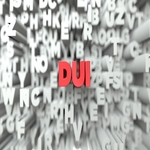
While many of our stories are similar in several ways, the catalysts that precipitated treatment are often quite similar—arrest. It is often said that you cannot force someone to take the initiative regarding seeking recovery. Until someone is ready to help them self, how can they be expected to accept help from others? If demanding that someone seek help was all that was required for beginning to work an honest program, there would likely be many more people with continued long term sobriety.
There is a significant number of people in the rooms of recovery who believe that hitting rock bottom is a prerequisite for being able to truly admit that one has a problem, accept that their way is not working and surrender. If there is any doubt in one’s mind, that uncertainty can quickly go from a spark of an idea to the wildfire of relapse. Naturally, for large percentage of people working a program of recovery, the penalties of driving under the influence were their bottom—leading to giving recovery a chance.
Alcohol and Driving by the Numbers
Of course, not everyone who drives under the influence has a problem with alcohol—”normal” people make poor decisions, too. People from every legal driving age group make the choice to get behind the wheel under the influence every day of the week in the United States. A choice that puts not just the driver’s life at risk, but the lives of those they share the road with. Encouraging people to make sounder decisions when it comes to driving while inebriated is not an easy task, and every year the country must rededicate itself to education and prevention efforts.
The major news regarding the dangers of using mind altering substances revolves mostly around opioids these days, and for good reason. The number of opioid overdose deaths every year has surpassed traffic fatalities in the preventable death department. However, it is important that we do not lose sight of DUI prevention, considering that 10,265 people died in the U.S. due to alcohol-impaired crashes in 2015, up 3.2 percent from 9,943 in 2014, according to the National Highway Traffic Safety Administration. In 2015, there was an alcohol-impaired traffic fatality every 51 minutes.
National Impaired Driving Prevention Month
As we move through the 12th month of 2016 in anticipation of the New Year, we can all do our part to fight drunk driving. It is no secret that December is a month typified by heavy alcohol consumption, with holiday parties and all. More people will be in a position to make bad decisions then most months of the year. And even if you are not imbibing, you may be at risk if you are on the road. You may find yourself at a get together with friends and family who are drinking, some of whom will think they can drive. You may be able to talk them out of it, offering to drive them yourself or calling a taxi for them. Believe it, or not, little interventions like this could have huge benefits—potentially saving a life.
The increased dangers on the road in December is why this is National Impaired Driving Prevention Month, as proclaimed by the President of the United States. The proclamation calls on the entire nation to do their part to help prevent deadly car accidents that can result from drinking alcohol or using drugs. The President writes:
“Whether encouraging parents to set a good example for their teen drivers or educating every driver on the dangers of unsafe driving, we must recommit to doing everything we can to prevent driving-related injuries and fatalities. This month, let us continue empowering drivers to make responsible decisions and educating the American people on ways they can help keep our roads safe and our futures bright.”
For more information on drunk driving prevention efforts, please click here.


